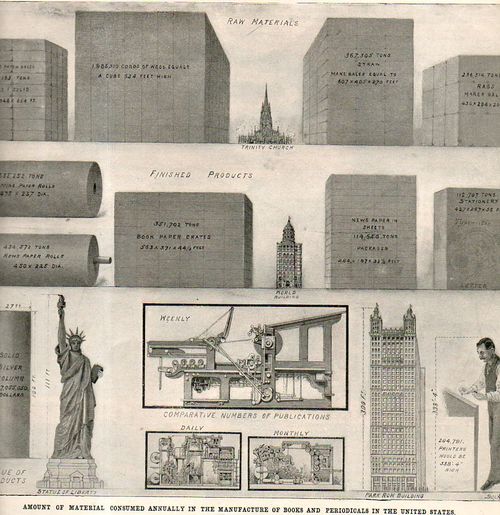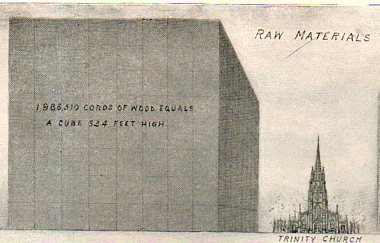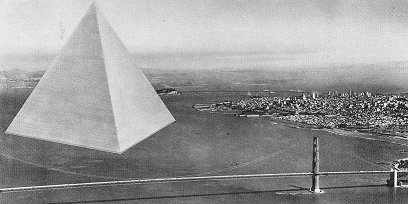JF Ptak Science Books Quick Post
The rather dry article appearing in the 14 November 1903 issue of Scientific American discussing the comparison of raw and finished products in the printing and paper making industry survives itself in a glorious way with a captivating infographic explaining things in terms of units of Trinity Churches and Statues of Liberty--and that's what makes the difference in presentation of data and the artistic display of statistical information.
 [Source: Scientific American, 14 November 1903]
[Source: Scientific American, 14 November 1903]
After everything is said and done these images remind me (unfairly, probably) of Buckminster Fuller's idea for an enormous floating city named Triton. All things being equal, Triton probably could have worked, for good or not.
`In the early 1960s I was commissioned by a Japanese patron to design one of my tetrahedronal floating cities for Tokyo Bay. Three-quarters of our planet Earth is covered with water, most of which may float organic cities. Floating cities pay no rent to landlords. They are situated on the water, which they desalinate and recirculate in many usefuland non-polluting ways. They are ships with all an ocean ship's technical autonomy, but they are also ships that will always be anchored. They don't have to go anywhere. Their shape and its human-life accommodations are not compromised, as must be the shape of the living quarters of ships whose hull shapes are constructed so that they may slip, fishlike, at high speed through the water and high seas with maximum economy. Floating cities are designed with the most buoyantly stable conformation of deep-sea bell-buoys. Their omni-surface-terraced, slop-faced, tetrahedronal structuring is employed to avoid the lethal threat of precipitous falls by humansfrom vertically sheer high-rising buildings.'
quote from Critical Path, by Buckminster Fuller, p. 332. [Quote via Behance, here.]





Comments